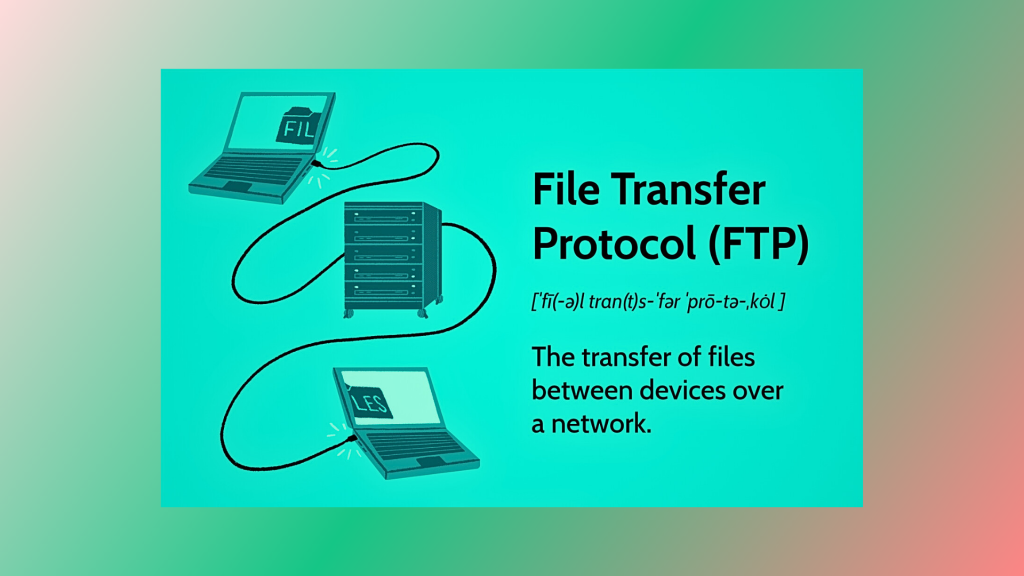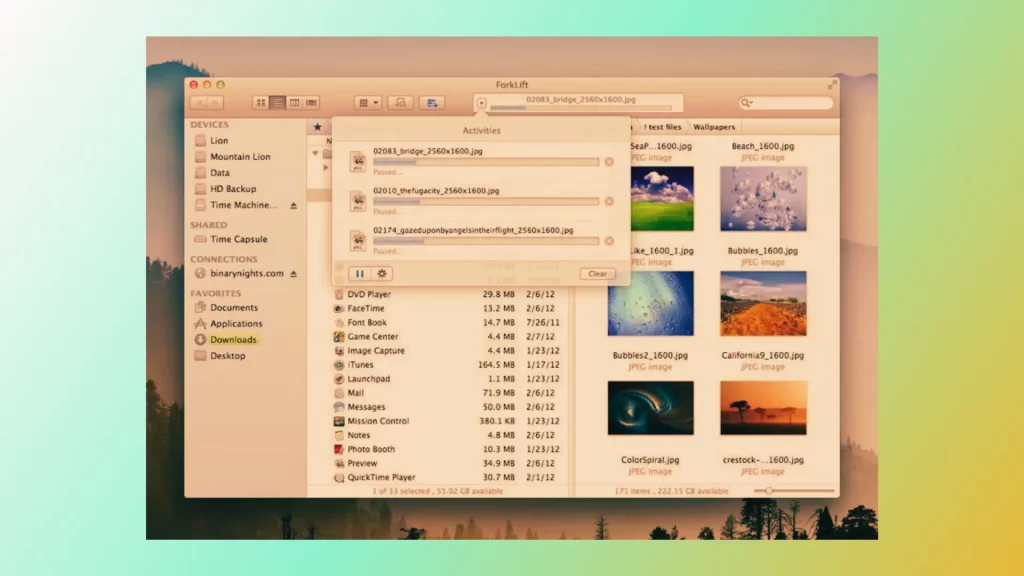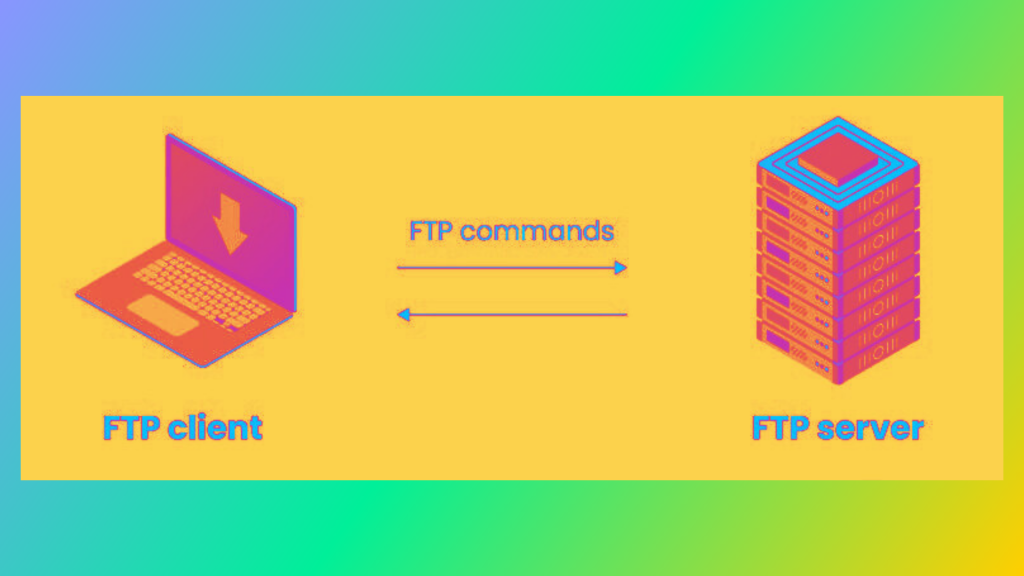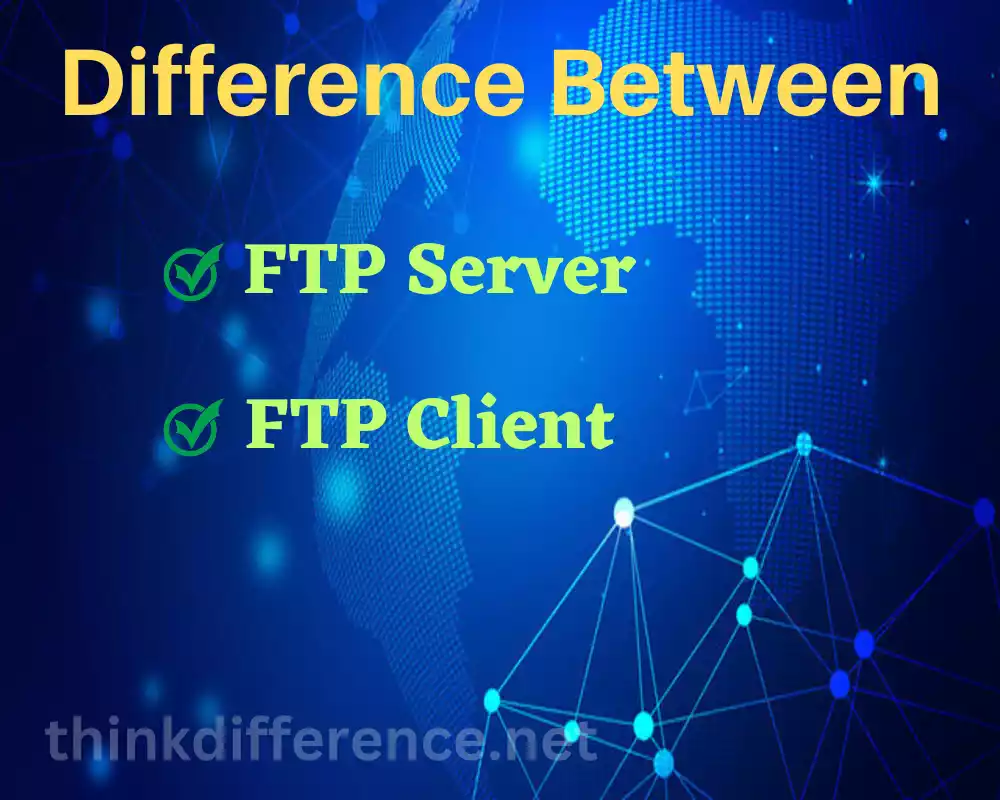The FTP Server and the FTP Client. Both are vital elements in file transfer. The server hosts files while clients connect to it to initiate transfer.
This outline will cover the fundamentals of FTP Server and FTP Client by exploring their respective features, capabilities and distinctions. Understanding their roles is critical in order to facilitate secure file transfers across many situations such as web development, backup of data storage systems or sharing files among colleagues.
What is FTP Server?

An FTP Server is a computer application that serves as the central repository for files over a network and makes them accessible via FTP Clients. Enabling users to upload, download and manage them remotely.
An FTP Server offers several key capabilities:
File Storage: An FTP Server provides storage space for files and directories. It organizes files in a hierarchical structure, allowing users to navigate and access the stored content.
- User Authentication and Access Control: FTP Servers enforce user authentication to control access to files. Users must present valid login credentials (username and password) when connecting to the server, with access rights being allocated based on group membership or individual use to ensure only authorized people may gain entry to particular directories or files on it.
- Directory Listing and Navigation: FTP Servers allow users to browse the server’s directory structure and view file listings. Users can navigate through directories, view file properties, and identify files for transfer.
- Concurrent Connections and Bandwidth Management: FTP Servers support multiple simultaneous connections from FTP Clients. They manage and control the bandwidth allocated to each connection, ensuring fair resource allocation and optimal performance.
- Logging and Monitoring: FTP Servers log various activities, such as user logins, file transfers, and administrative actions. Information collected is useful in auditing, troubleshooting and providing security. Server administrators can monitor and analyze server usage and performance metrics.
FTP Server software can be found across a number of operating systems including Windows, Linux and macOS. FileZilla Server, vsftpd (Very Secure FTP Daemon) as well as ProFTPD are among the more commonly-used FTP Server solutions.
FTP Servers find applications in various scenarios, such as website hosting, content management, file sharing, and remote backup. They provide a reliable and secure means of storing and sharing files, enabling seamless collaboration and data exchange over networks.
Types of FTP Servers
There are several types of FTP Server software available, catering to different needs and operating environments. Here are some popular types of FTP Servers:
- FileZilla Server: FileZilla Server is an intuitive open-source FTP Server available free for use on Windows operating systems that features user authentication access control logs access control as well as bandwidth controls for multiple concurrent connections. It boasts an easy user experience while supporting multiple concurrent sessions at the same time and with features including user login authentication access control logs access control as well as bandwidth controls for each concurrent session.
- vsftpd (Very Secure FTP Daemon): vsftpd is a lightweight and secure FTP Server software primarily designed for Linux and Unix-like systems. It focuses on security, performance, and stability, offering features like user access restrictions, SSL/TLS encryption, IPv6 support, and virtual user support.
- ProFTPD: ProFTPD is a highly configurable and modular FTP Server software available for Unix-like systems. It supports various authentication methods, including Unix authentication, virtual users, and LDAP integration. ProFTPD offers extensive customization options and advanced features like dynamic IP-based access control and per-directory configurations.
- Pure-FTPd: Pure-FTPd FTP Server software offers easy setup and secure FTPS functionality across a range of operating systems like Linux, Unix, Windows and macOS. It emphasizes security features such as chroot jails, virtual users, and SSL/TLS encryption. Pure-FTPd also supports various authentication backends and offers a range of configuration options.
- Serv-U FTP Server: Server-U FTP Server is a commercial FTP Server solution available on both Windows and Linux operating systems, featuring advanced security features like support for FTPS (FTP using SSL/TLS) and SFTP (SSH File Transfer Protocol). Serv-U offers a user-friendly interface, extensive logging capabilities, and robust administration tools.
- CrushFTP: CrushFTP is an open-source multiplatform FTP Server software which supports various protocols including FTP, FTPS, SFTP, HTTP and WebDAV. It offers advanced features such as scripting, event-based automation, file compression, and user account management. CrushFTP focuses on security and provides encryption options and granular access controls.
These are just a few examples of FTP Server software available in the market. The choice of FTP Server depends on factors such as the operating system, specific requirements, security considerations, and scalability needs.
What is FTP Client?

An FTP Client can be defined as any program or application that allows users to connect to and transfer files with FTP Servers remotely. It provides an intuitive user experience while making managing file transfer between user’s personal computer and FTP Server easy and seamless.
FTP clients operate on PCs and allow access to FTP Servers through various authentication mechanisms such as username/password authentication or even anonymous access. Once connected, the FTP Client presents the server’s file system in a navigable interface, allowing users to browse directories, view file listings, and perform file operations.
The main functionalities of an FTP Client include:
- File Transfer: FTP Clients facilitate the transfer of files between the local machine and the FTP Server. Users have two options for uploading files – uploading from their personal computers to the server, or saving directly onto local machines from it.
- File Management: FTP Clients provide options for organizing files and directories on the server. Users have the capability to create directories, rename files and directories, delete files and perform other administrative tasks to manage files effectively.
- Resume and Pause: FTP Clients often support the ability to pause and resume file transfers. This feature is useful when transferring large files or when a transfer is interrupted. Users can resume transfers from where they left off instead of starting from the beginning.
- Connection Configuration: FTP clients enable users to easily set their connection details, including providing details regarding an FTP server address along with port number, hostname and type (passive or active mode). Users may also set up encryption options like SSL/TLS for secure transfers.
- User Authentication: FTP Clients prompt users to provide login credentials to establish a connection with the FTP Server. They can also support anonymous access, allowing users to connect without providing personal authentication details.
- Additional Features: Some FTP Clients offer advanced features such as synchronization between the local machine and server, batch file transfers, drag-and-drop functionality, and bookmarking favorite servers for quick access.
Popular FTP Client software includes FileZilla, WinSCP, and Cyberduck, which are available for various operating systems and provide an intuitive interface for managing file transfers. FTP Clients are widely used in scenarios such as website maintenance, content publishing, remote file access, and collaboration, where secure and efficient file transfer operations are required.
Types of FTP Client
There are numerous FTP Client software applications available, each offering different features and compatibility with various operating systems. Here are some popular types of FTP Clients:
- FileZilla: FileZilla is an acclaimed, open-source, free FTP client which runs smoothly on Windows, Linux and macOS operating systems. Providing an intuitive user interface which supports multiple concurrent connections at the same time and offers features such as drag-and-drop file transfers and website bookmarking for bookmarking websites as well as resume functions – FileZilla makes FTP connectivity simple!
- WinSCP: WinSCP is a free and open-source FTP Client specifically designed for Windows. In addition to FTP, it supports SCP (Secure Copy Protocol) and SFTP (SSH File Transfer Protocol). WinSCP offers a dual-pane interface, encrypted file transfers, scripting capabilities, and integration with PuTTY for secure shell (SSH) connections.
- Cyberduck: Cyberduck is a popular FTP Client available for both Windows and macOS. Supported protocols include FTP, SFTP, WebDAV and Amazon S3. Cyberduck features a sleek interface, integrates with external text editors, supports synchronization, and provides bookmark management.
- CuteFTP: CuteFTP is a commercial FTP Client available for Windows. It offers a range of features, including a customizable interface, file transfer scheduling, folder synchronization, and simultaneous transfers. CuteFTP supports FTPS and SFTP for secure file transfers.
- Transmit: Transmit is a feature-rich FTP Client designed exclusively for macOS. Modern and user-friendly interface, offering support for FTP, SFTP, WebDAV protocols. Features like sync browsing and batch file transfers with cloud integration (e.g. Amazon S3 or Google Drive).
- Fetch: Fetch is a well-known FTP Client for macOS that focuses on simplicity and ease of use. It offers a straightforward interface, supports FTP and SFTP, and includes features like file preview, edit-in-place capabilities, and Automator support for automation tasks.
These are just a few examples of FTP Client software available in the market. When selecting an FTP Client, consider factors such as the operating system compatibility, required features (e.g., encryption, synchronization), user interface preferences, and integration with other tools or services.
Differences Between FTP Server and FTP Client

FTP Server and Client are two key elements that comprise FTP (File Transfer Protocol), each serving various roles when it comes to file transference. Here’s the key distinctions between them:
1. Role and Functionality:
- FTP Server: A FTP server acts as both host and file storage provider, providing FTP Clients access to file storage. It manages files by placing them into directories while also overseeing user authentication processes and responding to users’ requests allowing uploading, downloading, managing files within its servers as well as responding to any user inquiries about them.
- FTP Client: FTP Client The FTP Client communicates with an FTP Server in order to begin file transfer, providing users access to browse its filesystem as well as transfer files directly from personal machines onto it for later download back onto them from within their own machines. In addition, this client manages users interfaces as well as files management and connection setup/management services for users registering accounts with it.
2. Software and Setup:
- FTP Server: Setting up an FTP Server requires dedicated server software to be installed and configured on a computer or server. The server software manages the storage, access control, and other server-side functionalities.
- FTP Client: FTP Clients are software applications installed on the user’s local machine. Users choose an FTP Client software compatible with their operating system and configure the client software to connect to the desired FTP Server.
3. User Perspective:
- FTP Server: From the server perspective, administrators manage user accounts, set up file permissions, and ensure the security and availability of the server. Administrators of servers have the responsibility of overseeing its upkeep and the files stored therein.
- FTP Client: From the client perspective, users interact with the FTP Client software to connect to the FTP Server, navigate directories, perform file transfers, and manage files on their local machine. Users focus on initiating and managing their own file transfer operations.
4. File Transfer Direction:
- FTP Server: The FTP Server supports both uploading (sending files from client computers to the server) and downloading of data, enabling clients to transfer files in either direction as requested. Client requests can be responded to quickly with appropriate files transferred according to direction requested.
- FTP Client: The FTP Client initiates and directs file transfer requests between servers. Users can choose whether to transfer files via FTP Client or download directly from servers.
5. Network Requirements:
- FTP Server: An FTP Server requires a publicly accessible IP address or domain name and appropriate network configurations to accept incoming connections from FTP Clients over the network.
- FTP Client: The FTP Client needs network connectivity to establish a connection with the FTP Server. Dependent upon the server, your device may access it through both local networks and internet connectivity.
6. Security Considerations:
- FTP Server: FTP Servers implement security measures to protect files and control access. This includes user authentication, access restrictions, and optional encryption protocols like SSL/TLS for secure file transfers.
- FTP Client: FTP Clients offer security options such as enabling encryption (e.g., SSL/TLS) during file transfers. They also have the option of authenticating to an FTP Server using user credentials that have been provided from them.
Understanding the distinctions between FTP Server and FTP Client is crucial for effectively managing file transfers, ensuring data security, and maintaining efficient collaboration between users and servers.
The Relationship of FTP Server and FTP Client
An FTP Server and Client are connected by a client-server relationship that works like this one does, Their work together enables file transfers across networks. Here’s a brief snapshot of their bond:
- Client Requests and Server Responses:
- The FTP Client initiates a connection to the FTP Server by providing the server’s address and necessary login credentials.
- Once connected, FTP Client communicates its requests directly to the FTP Server. Listing directory contents or uploading and downloading files.
- The FTP Server receives these commands from the client and executes them accordingly.
- Response codes and messages provide clients with instantaneous confirmation or non-confirmation of each client request, giving an indication as to its success or failure.
- File Transfer:
- FTP Client requests the uploading of files via network connection. When requested to upload one or more, FTP Server transmits them over that connection and to FTP Client via network transfer.
- FTP Servers will receive and store any file uploaded for storage within their file system.
- FTP Servers act similarly, when an FTP Client makes requests to download files from them through an internet connection. When this occurs, an FTP Server sends those requested files over.
- An FTP Client accepts and saves files locally on its machine.
- Directory Navigation and File Management:
- The FTP Client can navigate the directory structure of the FTP Server, listing directories, and viewing file information.
- Establish new directories, delete directories, rename files and perform various file-management tasks on servers.
- The FTP Server ensures that the client has the necessary permissions to perform the requested operations and enforces access control rules.
- Authentication and Security:
- FTP Client provides login credentials (username and password) in order to authenticate itself with FTP Server. FTP Server.
- The FTP Server verifies the provided credentials and grants access to authorized users while denying access to unauthorized users.
- Secure file transfers must occur between FTP Server and Client in order to protect information exchanged between them. Encryption protocols such as SSL/TLS can help both ensure their data stays protected during transfer.
- Simultaneous Connections:
- The FTP Server is designed to handle multiple simultaneous connections from different FTP Clients.
- Multiple clients can connect to the server concurrently and perform file transfers independently.
- The server manages the resources and bandwidth allocation to each connected client, ensuring fair and efficient file transfer operations.
The FTP Server and FTP Client interact through a client-server relationship. Clients establish connections, communicate commands, and manage transfers of files; while servers receive requests, execute commands, and facilitate file transfers. Together, they enable users to upload, download, and manage files efficiently over a network using the FTP protocol.
Summary
FTP servers and FTP clients remain valuable tools for seamless file transfers. While FTP servers provide a central hub for data storage and sharing, FTP clients offer a user-friendly way to interact with these servers. For optimal security, organizations can consider using SFTP or FTPS for encrypted data transfers.
Understanding the differences between FTP and cloud storage services allows users to choose the most appropriate solution based on their specific needs.



